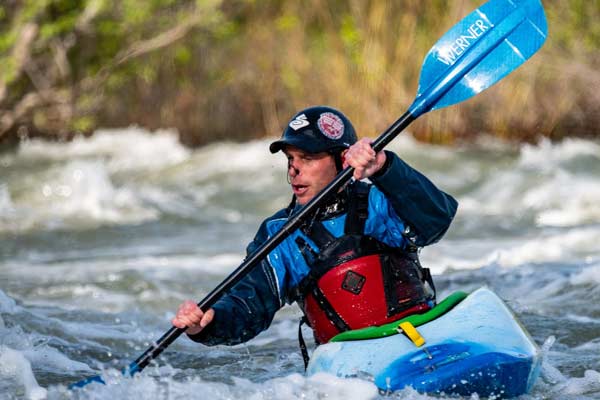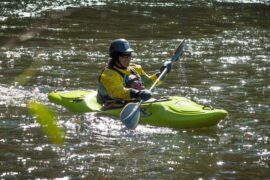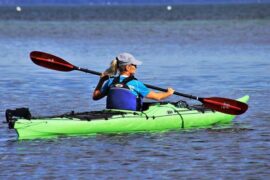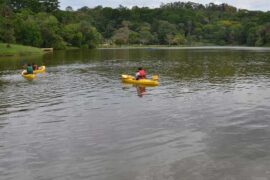Kayaking delivers plenty of thrill and adventure that’s hard to find in many other sporting activities. However, kayaking is risky, and participants must practice safety measures to avoid injury or fatalities.
The misconceptions around kayaking safety can mislead beginners and aspiring kayakers about the sport’s safety.
A 2020 report by the U.S. Coast Guard ranked Kayaks as the vessel type with the second highest death rates behind open motorboats. In aggregation, kayaking contributes to 15% of all deaths in registered recreational water vessels.
Though kayaking is dangerous, many fatalities and accidents are avoidable if kayakers adhere to safety protocols. If done correctly, kayaking can deliver a fun and unforgettable experience.
From navigating hazardous water features to dehydration and nausea, kayaking can turn fatal when things go against you.
To improve your kayaking experience, it helps to distinguish real risks from perceived risks. Below we explore the top kayaking dangers to look out for during your expedition.
Perceived Vs. Actual Kayaking Risks
Perceived risk refers to an individual’s perception about how dangerous they think a situation is, while actual risk reflects how risky a situation truly is.
Avoidable Kayaking accidents occur when risk perception is lower than the actual risk. Sometimes, kayaking dangers can be difficult to spot when kayaking in unfamiliar locations.
People with a high perceived risk tend to be extra cautious and will prepare for the worst. While being extra cautious will keep you out of trouble, this hyper-alert approach can prevent you from unearthing the thrills of kayaking.
1. Getting stranded
While open waters can be inviting for a kayaker, venturing too far can leave you stranded at sea. Sea kayaking is particularly risky because it is difficult to track your direction. Without visible landmarks at sea, it’s easy to get lost and not know your location.
To avoid getting stranded, ensure the sea shore is visible regardless of how far your venture. Secondly, if the lake or paddle location has landmarks, use them to track your distance. Thirdly, consider carrying GPS devices for location awareness.
2. Watch out for low-head dams
Weirs or low head dams are man-made features that control water levels in rivers and dams. While low heads play an essential role in protecting the integrity of river banks and dams, these features present a deadly obstacle for many kayakers.
Water cascades over the low head, creating a recurring circular flow that can trap kayakers and their vessels.
Wiers and vicious undercurrent flows are notorious for dragging kayakers to the dam’s bottom.
Many countries provide visual danger warnings where low head dams have been constructed to alert kayakers on time.
However, not all low head dams feature warning signs; it helps to be familiar with the river you’re kayaking on and learn wier spotting techniques.
3. Sun exposure
Sun exposure ranks relatively low on many people’s perceived risk of kayaking. However, kayaking offers little protection from the sun’s heat. Paddling for more than an hour on a hot sunny day can leave you exhausted and dehydrated.
There’s also the risk of severe skin and eye damage due to exposure to ultraviolet radiation. This radiation is behind many skin cancers people face today.
You can protect yourself from sunburn and UV damage by wearing UV-resistant gear and sunscreen and staying hydrated throughout your excursion. Alternatively, you can schedule your kayak expeditions on late afternoons or early mornings during summer.
4. Hypothermia
While a few splashes of cold water won’t hurt, prolonged exposure to cold waters puts kayakers at risk of hypothermia.
What’s more, falling into cold waters can cause hard water shock. The sudden temperature change can inhibit muscle movement and lead to drowning.
Cold shock after a sudden immersion causes contraction of blood vessels and heart exhaustion, thus raising the risk of a heart attack.
In addition to breathing difficulties, cold shocks and hypothermia compromise cognitive functions like memory and judgment.
Kayakers can protect against hypothermia by dressing appropriately. A wetsuit will keep you dry and warm even after capsizing.
Practice paddling in groups to ensure there’s help in case of a cold shock. Lastly, it helps to know how to diagnose and treat hypothermia and cold shock symptoms.
5. Dehydration
Kayakers paddling for long hours on hot days are at risk of dehydration. The bursts of energy involved in paddling can cause exhaustion, burnout, and acute thirst hence the need to carry enough drinking water when kayaking.
Besides acute thirst, dehydration causes fatigue and dizziness, significantly lowering your ability to paddle effectively.
Kayakers should protect themselves against dehydration by carrying extra water bottles. The warmer it is outside, the more water you should have. Sip water as soon as you feel thirsty because thirst is often the first sign of dehydration.
6. Tides, waves, and currents
While big waves are an obvious sign of impending danger, an undercurrent or rip tide can be equally dangerous to a kayaker.
Being familiar with the nature of tides or currents in your kayaking route is the best way to avoid accidents when paddling. Plan your kayaking excursions and consider paddling with people familiar with the kayaking route.
The currents, tides, and waves can sometimes change depending on weather patterns and seasonality.
Mild rapids can quickly become monster rapids after a heavy downpour; similarly, a flash flood can turn a gentle stream into a hazardous waterway, thus endangering a kayaker’s life. Stay current on weather patterns and forecasts when planning kayak expeditions.
7. Rock undercuts
Undercut rocks arise when forceful water currents erode underlying rocks creating underground channels when water pools and channels.
When kayaking over fast-flowing rapids, the currents can sometimes drag the kayak underwater, making it difficult for kayakers to escape when trapped under a rock undercut.
During rock undercut formation, water forces can leave sharp edges that can damage your kayak and cause serious bodily harm.
The best way to guard against undercuts is to survey the kayaking route and map out all areas with undercuts before setting out for your adventure.




